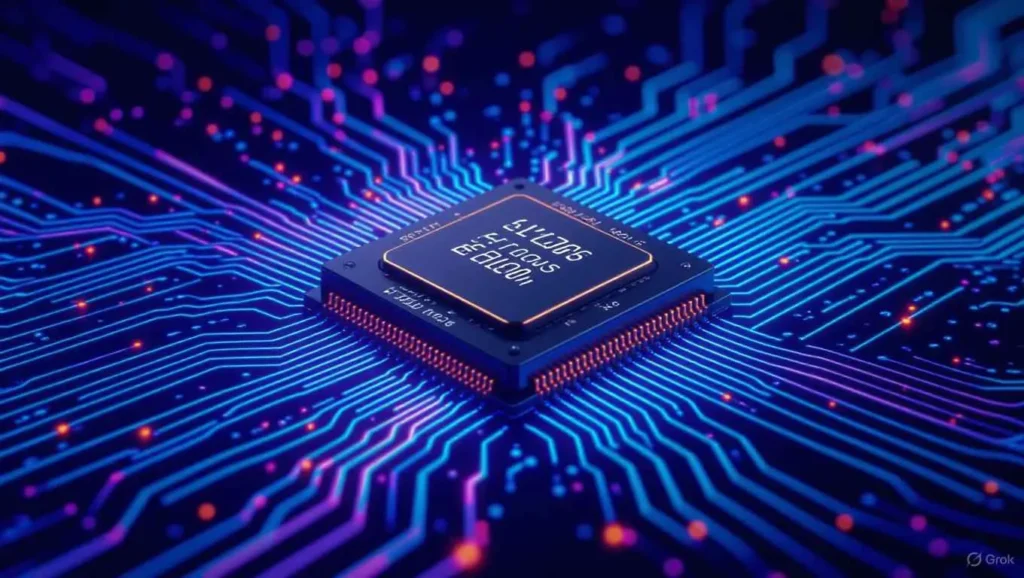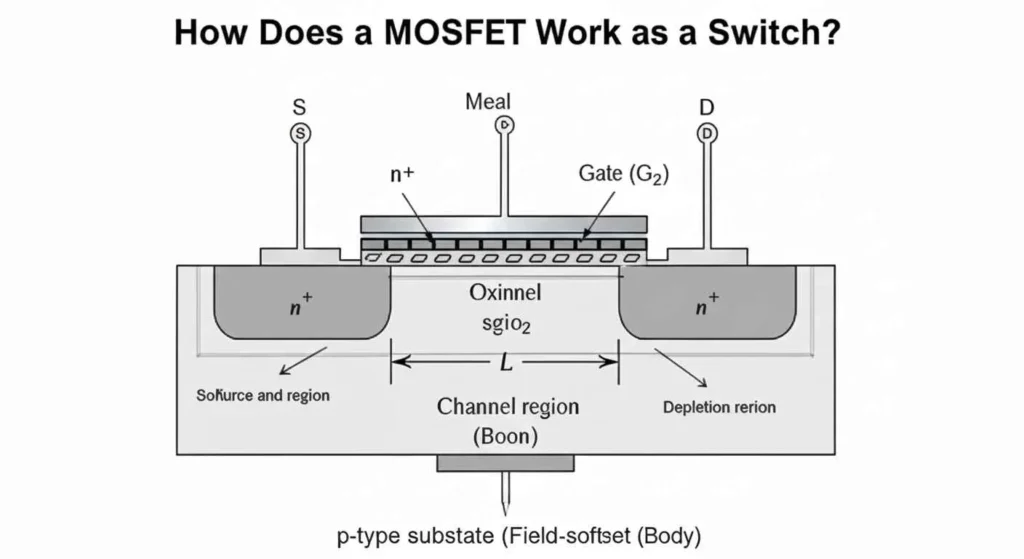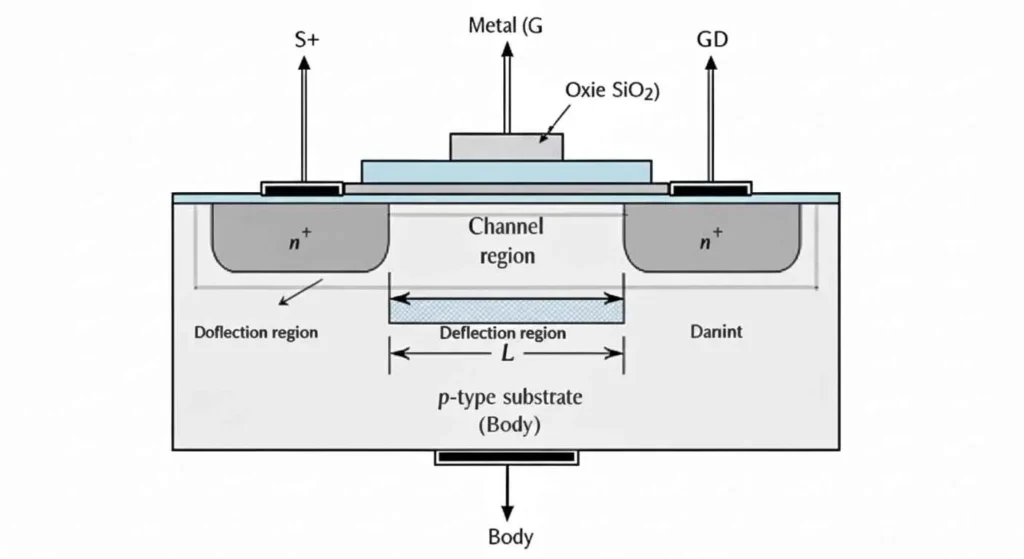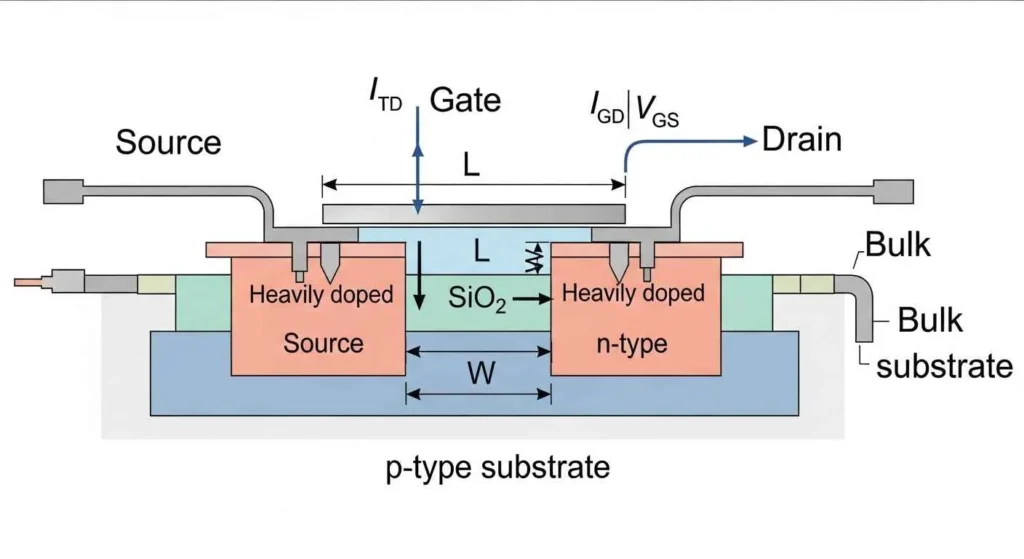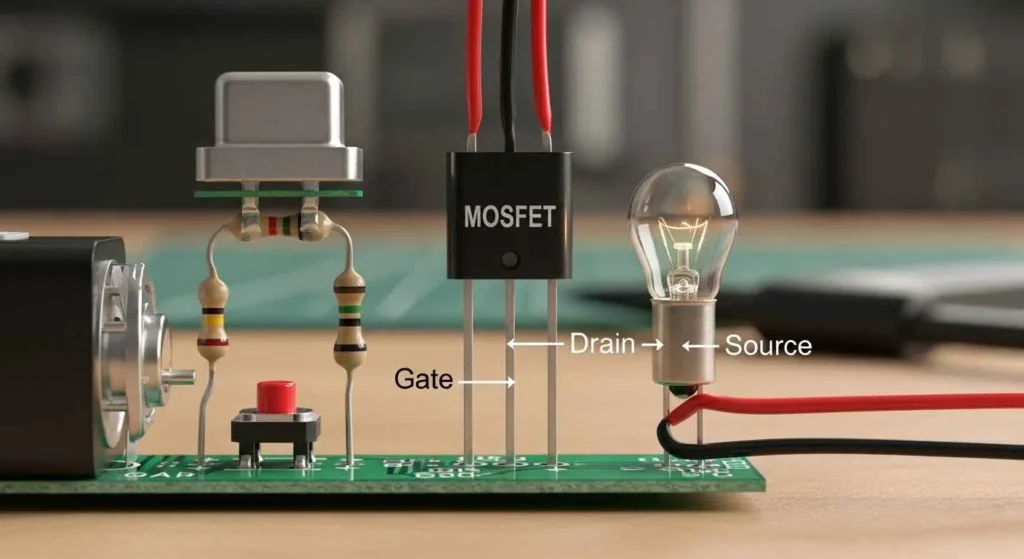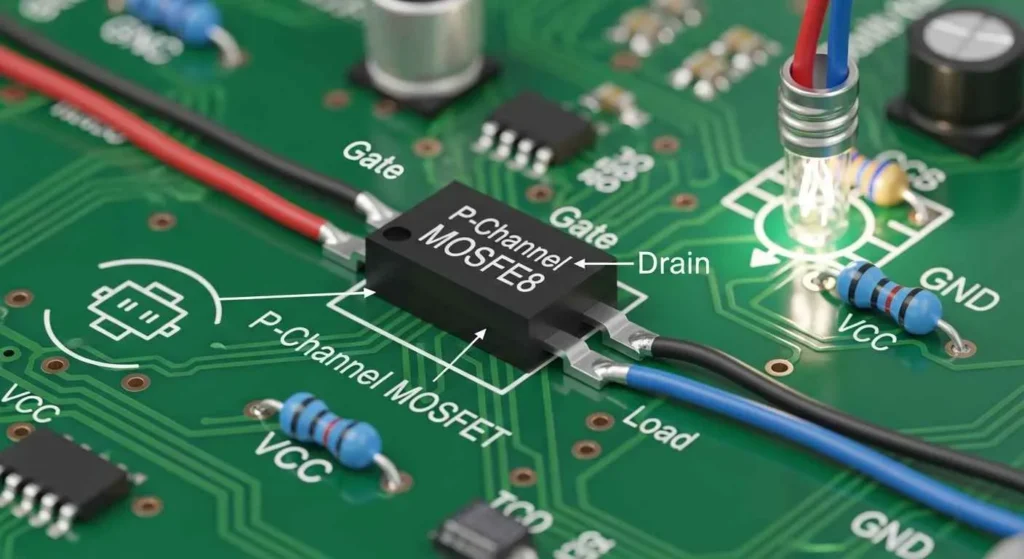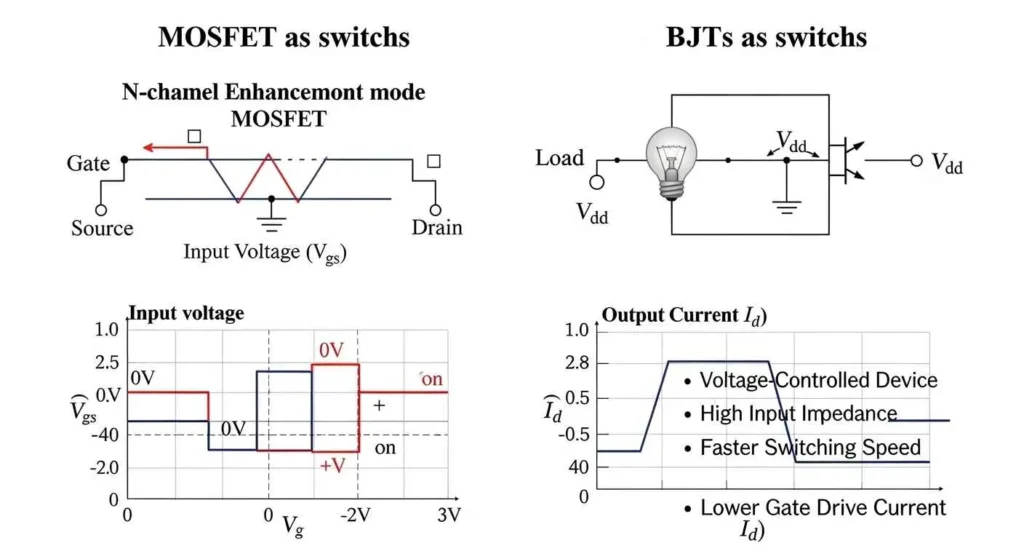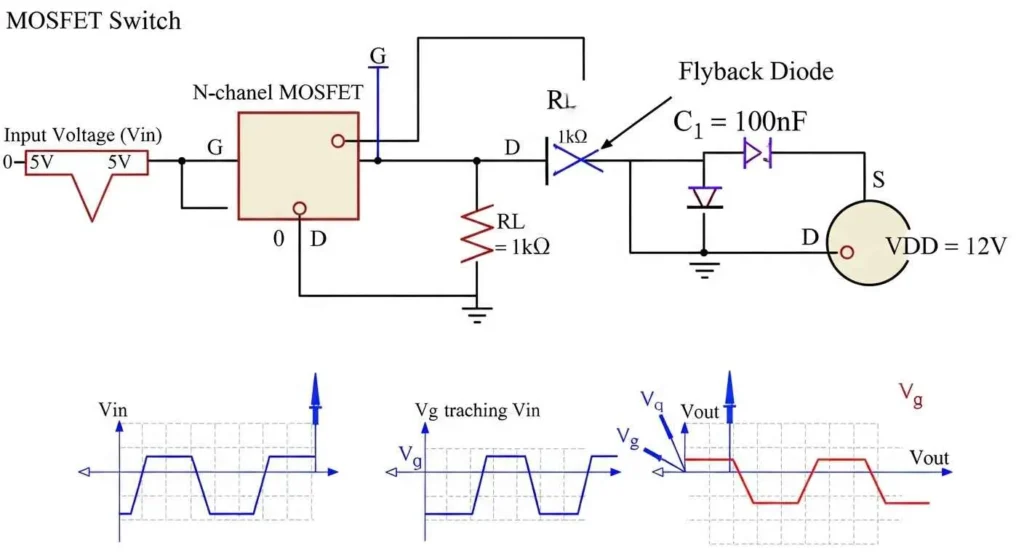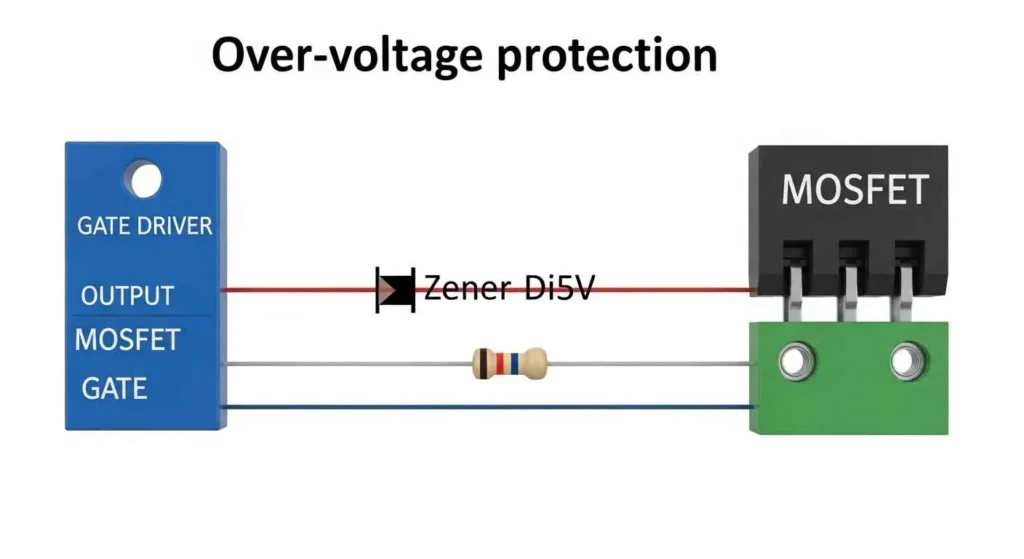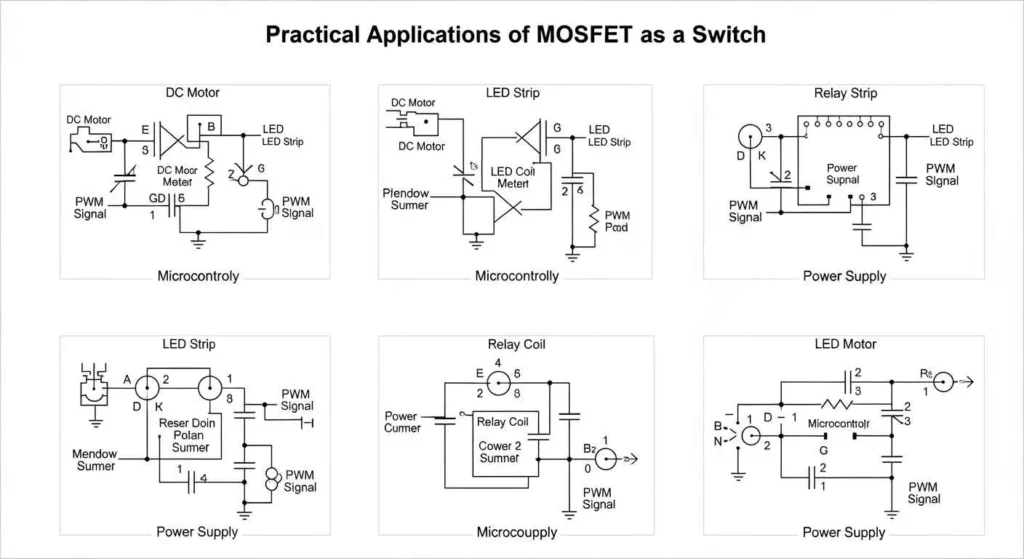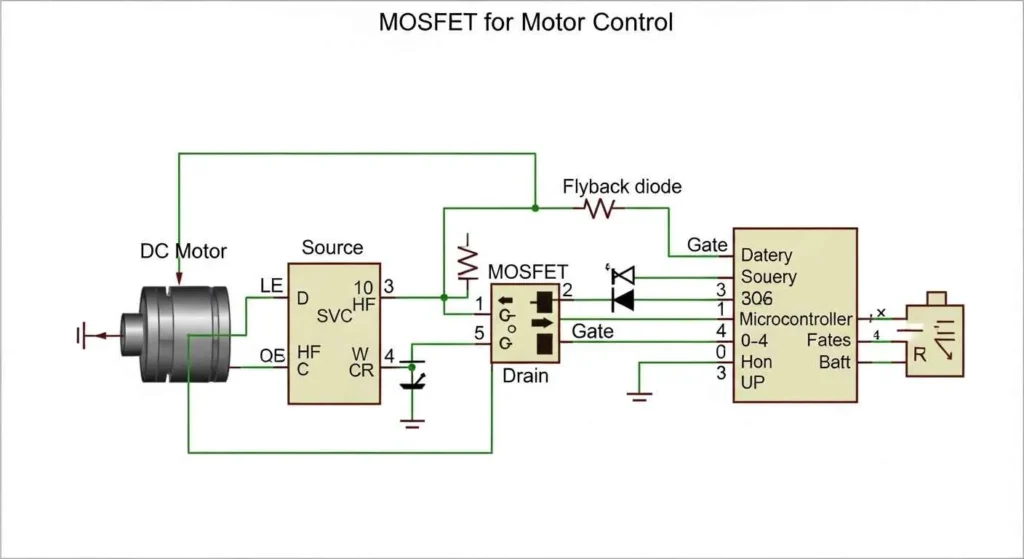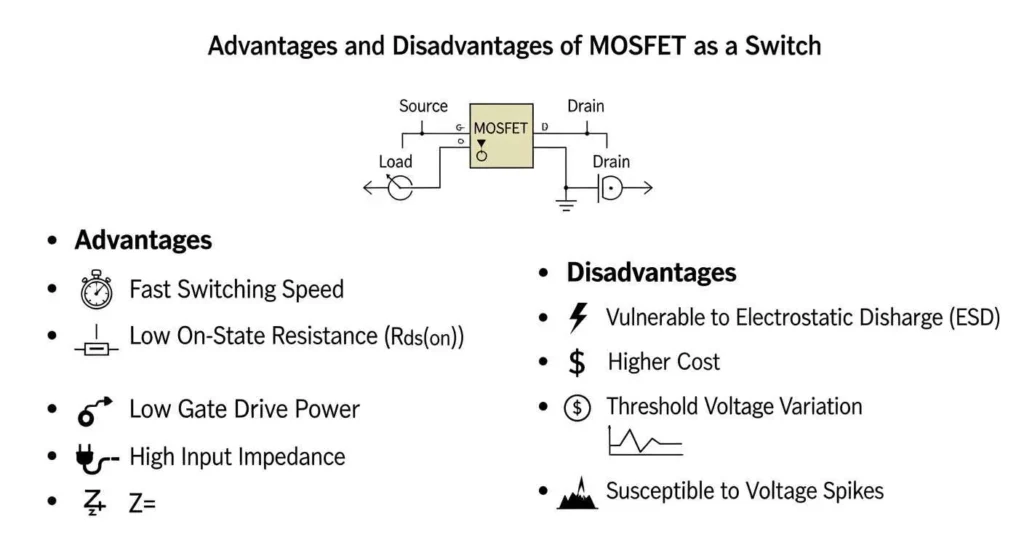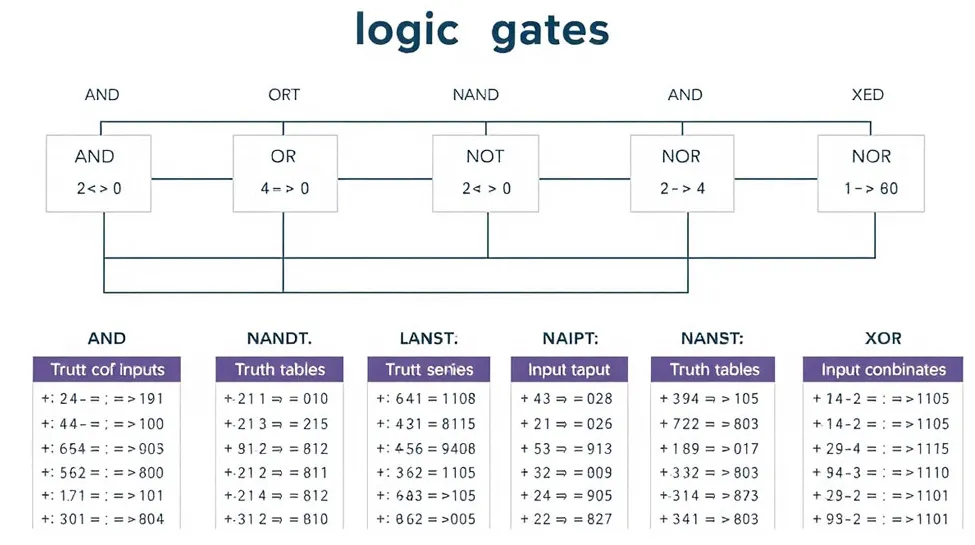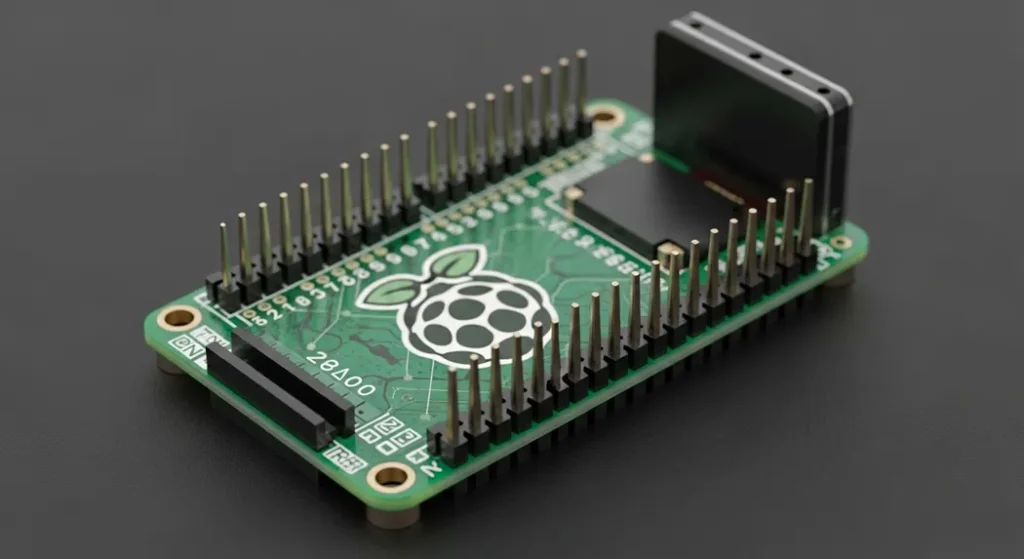Introduction to MOSFET as a Switch
Have you ever wondered how tiny electronic components can control powerful devices like motors or lights with just a flick of voltage? The MOSFET as a switch is at the heart of this magic in electronics. Short for Metal Oxide Semiconductor Field Effect Transistor, a MOSFET acts like a gatekeeper, allowing or blocking current flow based on a simple voltage signal. This guide dives deep into how a MOSFET works as a switch, its structure, and why it’s a go-to choice for everything from simple LED controls to complex motor drives. Whether you’re a hobbyist building your first circuit or an engineer refining designs, you’ll find clear explanations, practical tips, and circuit ideas that go beyond the basics. We’ll explore the MOSFET working principle, circuit diagrams, and applications, equipping you with the knowledge to use MOSFETs confidently and avoid common pitfalls.
What is a MOSFET?
A MOSFET is a type of transistor that uses an electric field to control the flow of current. Unlike other transistors, it’s voltage-controlled, meaning a small change in gate voltage can handle large currents between the drain and source. The full form of MOSFET is Metal Oxide Semiconductor Field Effect Transistor, and it’s a key player in modern electronics due to its efficiency and speed.
In simple terms, think of a MOSFET as a valve in a water pipe. The gate acts like the handle that opens or closes the valve, regulating the flow from drain to source. This makes it ideal for switching tasks where you need to turn things on or off quickly without wasting power.
How Does a MOSFET Work as a Switch?

The MOSFET working principle revolves around applying voltage to the gate to create or disrupt a conductive channel. For an enhancement mode MOSFET, the most common type used as a switch, no channel exists until you apply a positive gate voltage for an N-channel or negative for a P-channel.
When the gate voltage exceeds the threshold, known as Vgs threshold, electrons or holes form a channel, allowing current to flow. In the cutoff region, with gate voltage below the threshold, the MOSFET acts like an open switch, blocking current. In the saturation region, it behaves like a closed switch, letting current pass with minimal resistance.
This switching happens in nanoseconds, making MOSFETs faster than many alternatives. The low on-state resistance, or Rds on, ensures little power is lost as heat, which is why they’re preferred in power-sensitive applications.
Types of MOSFETs for Switching

MOSFETs come in different flavors suited for switching. The two main types are enhancement mode MOSFET and depletion mode MOSFET. Enhancement mode is normally off, requiring gate voltage to turn on, which is perfect for safe switching since it defaults to off without power.
Depletion mode is normally on, conducting without gate voltage, but it’s less common for switches because it needs voltage to turn off. Within these, there are N-channel MOSFETs, where current flows when gate voltage is positive relative to source, and P-channel MOSFETs, which turn on with negative gate voltage.
Power MOSFETs are designed for high currents and voltages, with structures that minimize resistance and heat. For beginners, logic-level MOSFETs are great because they switch fully with low voltages like 5V from microcontrollers.
MOSFET Structure and Components

At its core, a MOSFET has three main terminals: gate, drain, and source. The gate is insulated by a thin oxide layer from the semiconductor body, creating the metal-oxide part of its name. In an N-channel MOSFET, the source and drain are N-type regions in a P-type substrate.
The MOSFET diagram shows the gate controlling the channel between drain and source. Key components include the body diode, a parasitic element that can conduct in reverse, useful for protection but sometimes a limitation in switching speed.
Understanding the MOSFET pin diagram is crucial: gate for control, drain for output, source for reference. The MOSFET symbol varies for N and P channels, with an arrow indicating the body diode direction.
N-Channel MOSFET as a Switch

An N-channel MOSFET switch is popular for low-side switching, where it connects the load to ground. To turn it on, apply a positive voltage to the gate relative to the source, above the Vgs threshold.
In a basic circuit, connect the load between the positive supply and drain, source to ground, and gate to a control signal. When the gate is high, current flows through the load. This setup is efficient for driving LEDs or small motors.
For example, using an IRF540 MOSFET, a common choice for beginners, you can switch up to 33A at 100V. Ensure the gate voltage fully saturates it to minimize Rds on and heat.
P-Channel MOSFET as a Switch

A P-channel MOSFET switch excels in high-side switching, connecting the load to the positive supply. It turns on with a negative gate voltage relative to the source.
In practice, pull the gate low to activate. This is handy when you need to isolate the load from ground. A simple circuit has the source to positive supply, drain to load, and gate controlled by a pull-down signal.
Models like the IRF630 work well here, handling up to 9A at 200V. Remember, P-channel MOSFETs often have higher Rds on than N-channel, so they’re better for moderate currents.
MOSFET vs BJT as a Switch

Choosing between a MOSFET and a BJT as a switch depends on your needs. BJTs are current-controlled, requiring base current to operate, which can waste power. MOSFETs are voltage-controlled, drawing almost no gate current in steady state, making them more efficient.
MOSFETs switch faster and handle higher voltages, but BJTs are cheaper for low-power tasks. In high-current applications, MOSFETs shine with lower on-resistance. However, BJTs might be simpler for beginners in some circuits.
Basic MOSFET Switch Circuit Diagram

Let’s build a simple MOSFET switch circuit. Start with an N-channel like the IRF540. Connect a 12V power supply positive to a 100-ohm resistor in series with an LED, then to the drain. Source goes to ground. Gate connects to a 5V microcontroller pin through a 1k ohm resistor for protection.
When the pin goes high, the LED lights. For P-channel, reverse the logic: source to 12V, drain to LED positive, LED negative to ground via resistor, gate pulled low to turn on.
This circuit demonstrates the MOSFET on off switch behavior clearly.
How to Use MOSFET as a Switch
Using a MOSFET as a switch starts with selecting the right type. Check the datasheet for Vgs threshold, Rds on, and maximum ratings.
Connect probes carefully: gate for control, drain for load output, source for reference. Apply voltage above threshold to turn on. For microcontrollers, ensure logic levels match; use a MOSFET gate driver if needed for high speeds.
Test with a multimeter: measure voltage drop across drain-source when on—it should be near zero.
MOSFET Gate Driver and Protection

For fast switching, a MOSFET gate driver is essential. The gate acts like a capacitor, needing quick charge/discharge. Drivers provide high current pulses to speed this up.
Add protection: a series resistor limits current, a Zener diode clamps voltage. For inductive loads, use a flyback diode across the load to handle back EMF. In microcontroller setups, a simple transistor driver can suffice for low frequencies.
Practical Applications of MOSFET as a Switch

MOSFET applications abound in electronics. Use a MOSFET for LED switch in lighting: control brightness with PWM. In motor control, an H-bridge with MOSFETs allows direction reversal.
For power supplies, MOSFETs switch voltages efficiently. In audio amps, they handle signal switching. Even in solar chargers, they regulate power flow.
A real-world example: in a robot, use MOSFETs to switch wheel motors on command.
MOSFET for Motor Control

Controlling motors with MOSFETs is straightforward. For DC motors, a single N-channel MOSFET switches power. Add PWM for speed control.
An H-bridge uses four MOSFETs for bidirectional control. Ensure dead time to avoid shoot-through current.
Models like IRF540 handle motor currents well, but calculate heat dissipation: power loss equals current squared times Rds on.
MOSFET Heat Dissipation and Protection
Heat is a MOSFET’s enemy. During switching, losses occur in transitions. Minimize with fast drivers.
Calculate heat: use Rds on and current to find power dissipation, then select a heatsink if over 1W.
Protection includes overvoltage clamps, current limiting, and thermal shutdown circuits.
Advantages and Disadvantages of MOSFET as a Switch

MOSFET advantages include fast switching, low power loss, and high efficiency. They’re compact and reliable.
Disadvantages: sensitive to static, higher cost than BJTs, and need careful gate driving.
Overall, for modern designs, advantages outweigh drawbacks.
Simple Experiments for Beginners
Try this: Build a MOSFET LED blinker. Use an Arduino to pulse the gate. Observe how gate voltage affects brightness.
Another: Switch a small fan. Measure current and voltage drop to see efficiency.
These hands-on tests build intuition.
Historical Significance of MOSFETs
Invented in 1959, MOSFETs revolutionized electronics, enabling integrated circuits. Their scaling led to Moore’s Law, powering computers and phones.
In switching, they replaced bulky relays, making devices smaller and faster.
FAQ: Common Questions About MOSFET as a Switch
What is a MOSFET as a switch?
It’s a transistor that turns current on or off with gate voltage.
How does a MOSFET work as a switch?
By creating a channel when gate voltage exceeds threshold.
What is the difference between N-channel and P-channel MOSFET switch?
N-channel for low-side, P for high-side; polarity differs.
Can MOSFET be used as a switch for AC?
With proper circuits like solid-state relays, yes.
What is Rds on in MOSFET?
On-state resistance, affecting power loss.
Conclusion
Mastering the MOSFET as a switch unlocks endless possibilities in electronics. From basic circuits to advanced controls, its efficiency and speed make it indispensable. Experiment with the ideas here, and you’ll see why it’s a favorite. Share your MOSFET projects in the comments or download our free circuit guide!

